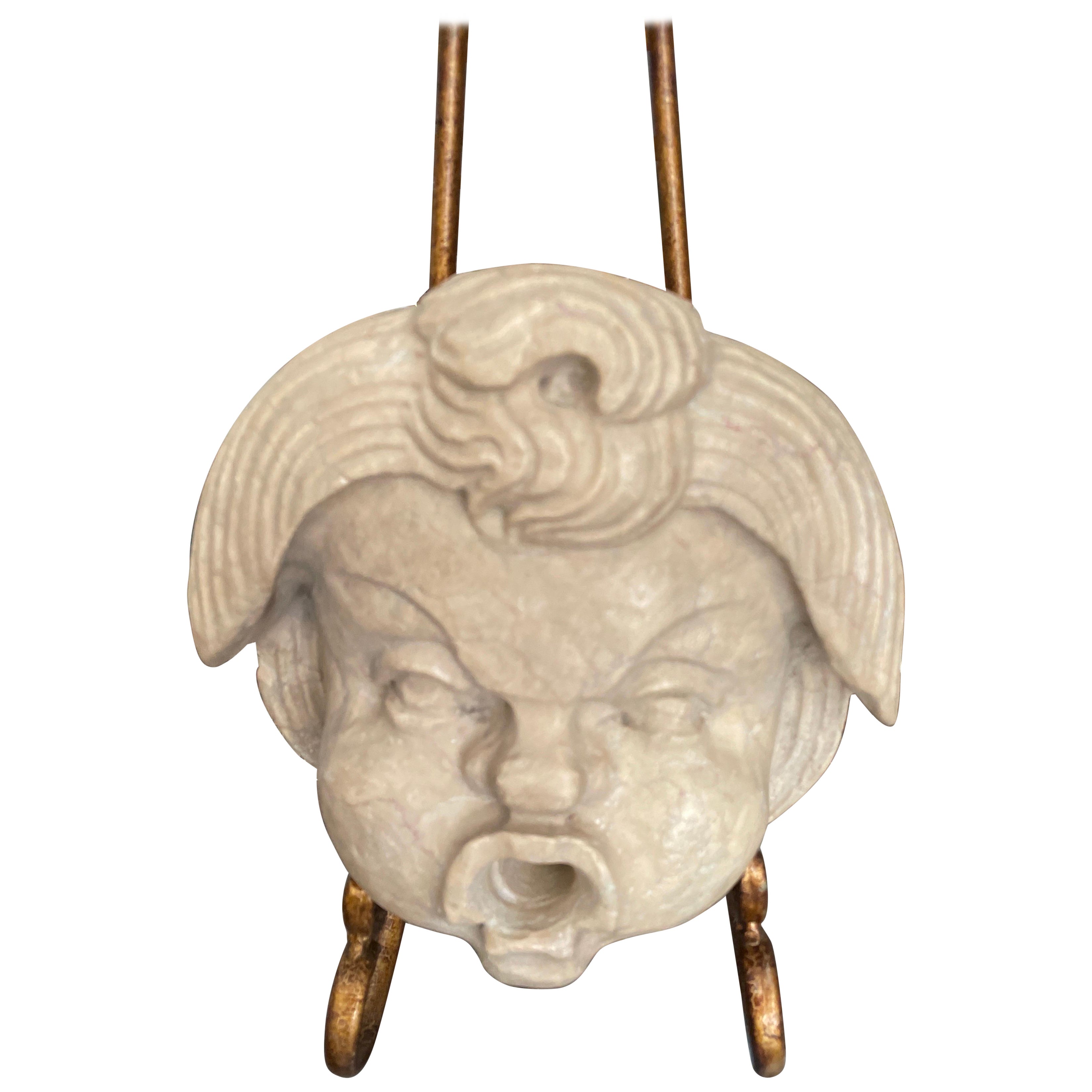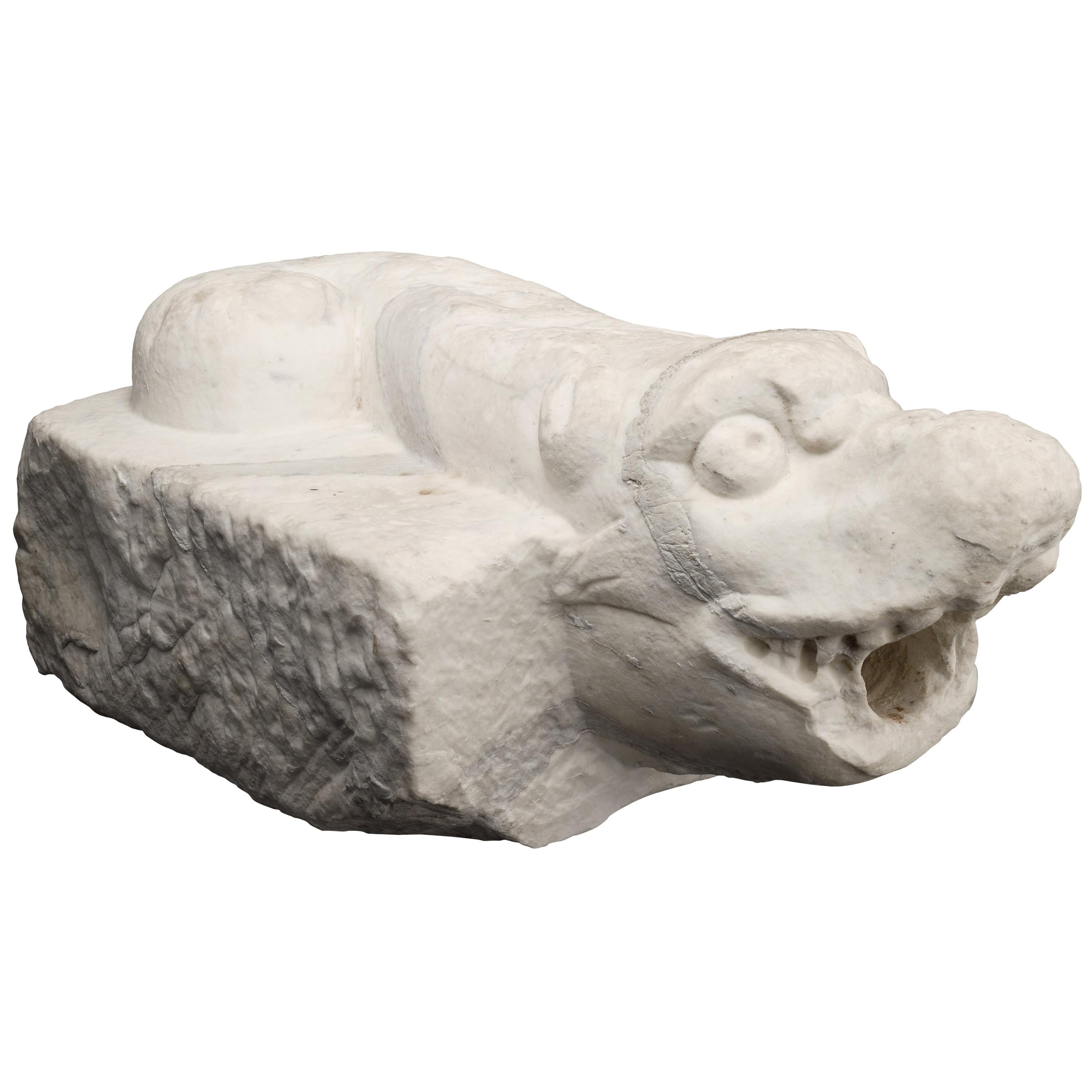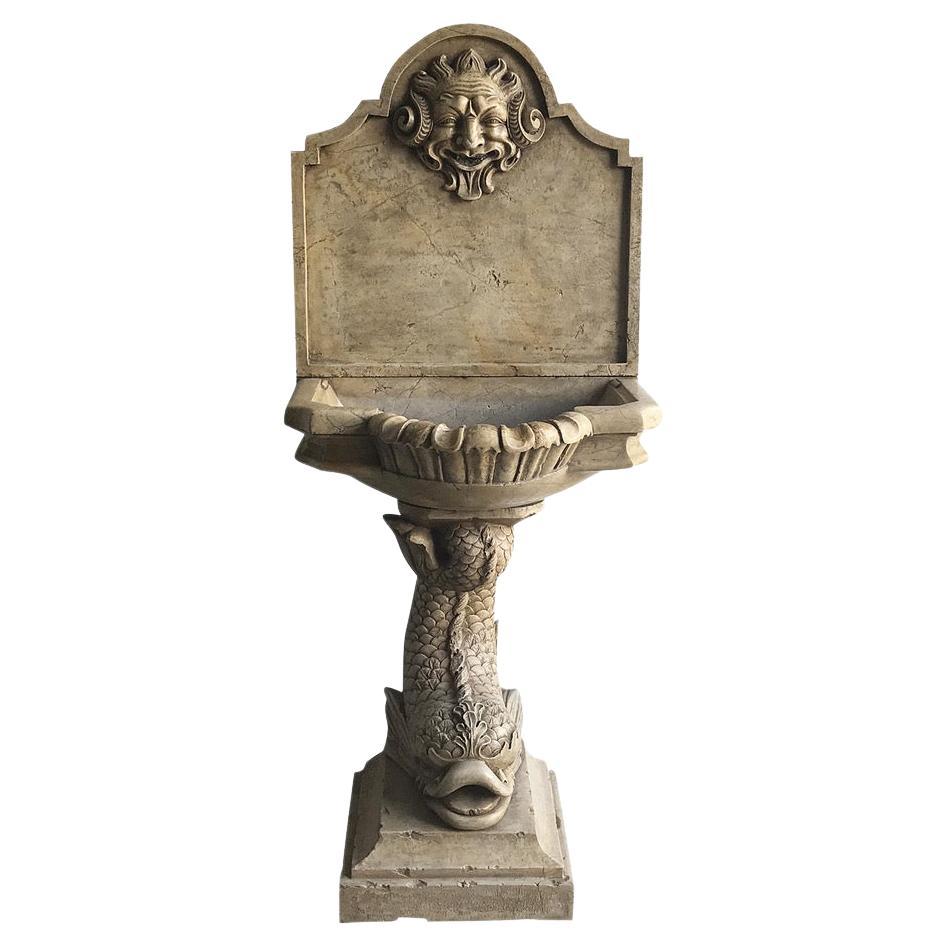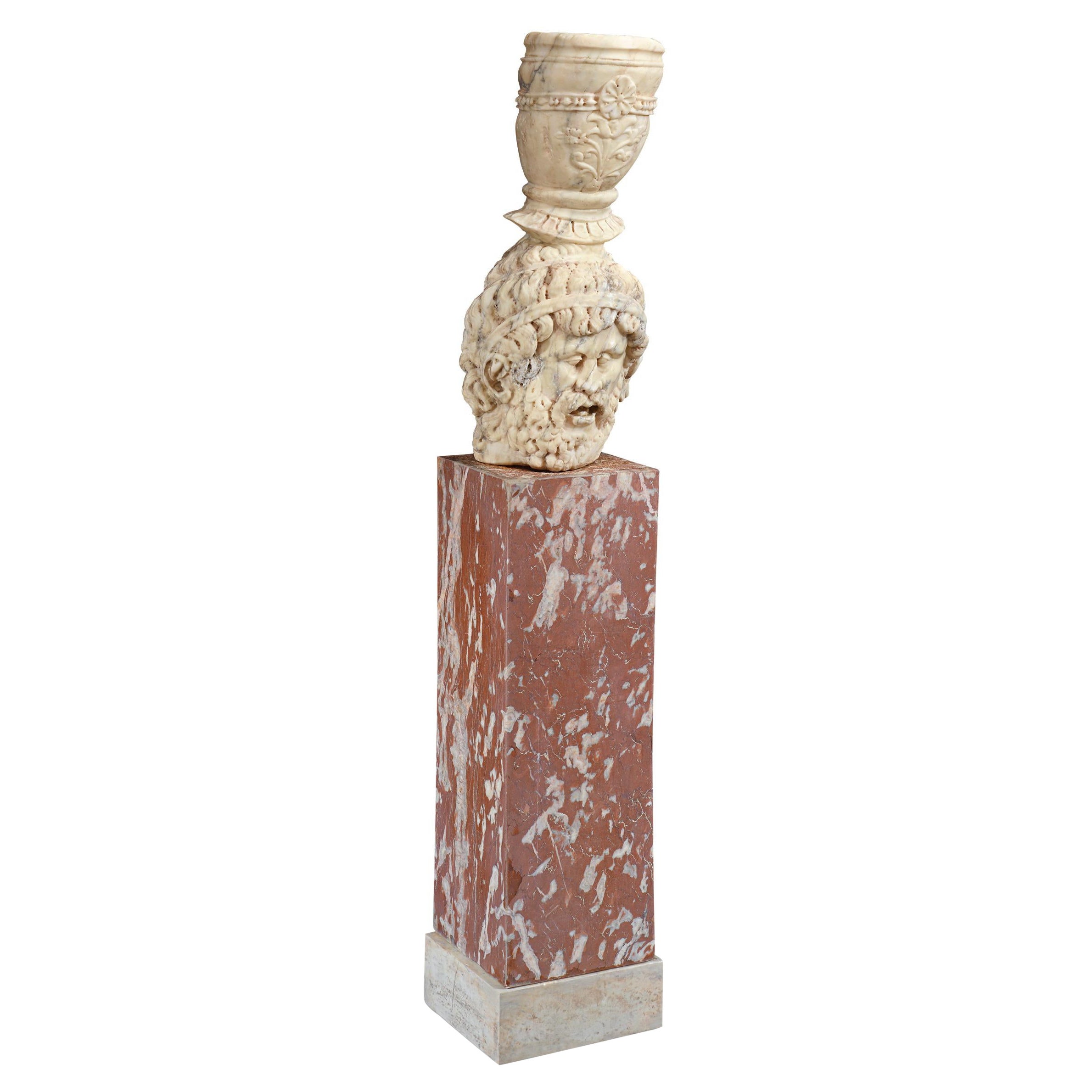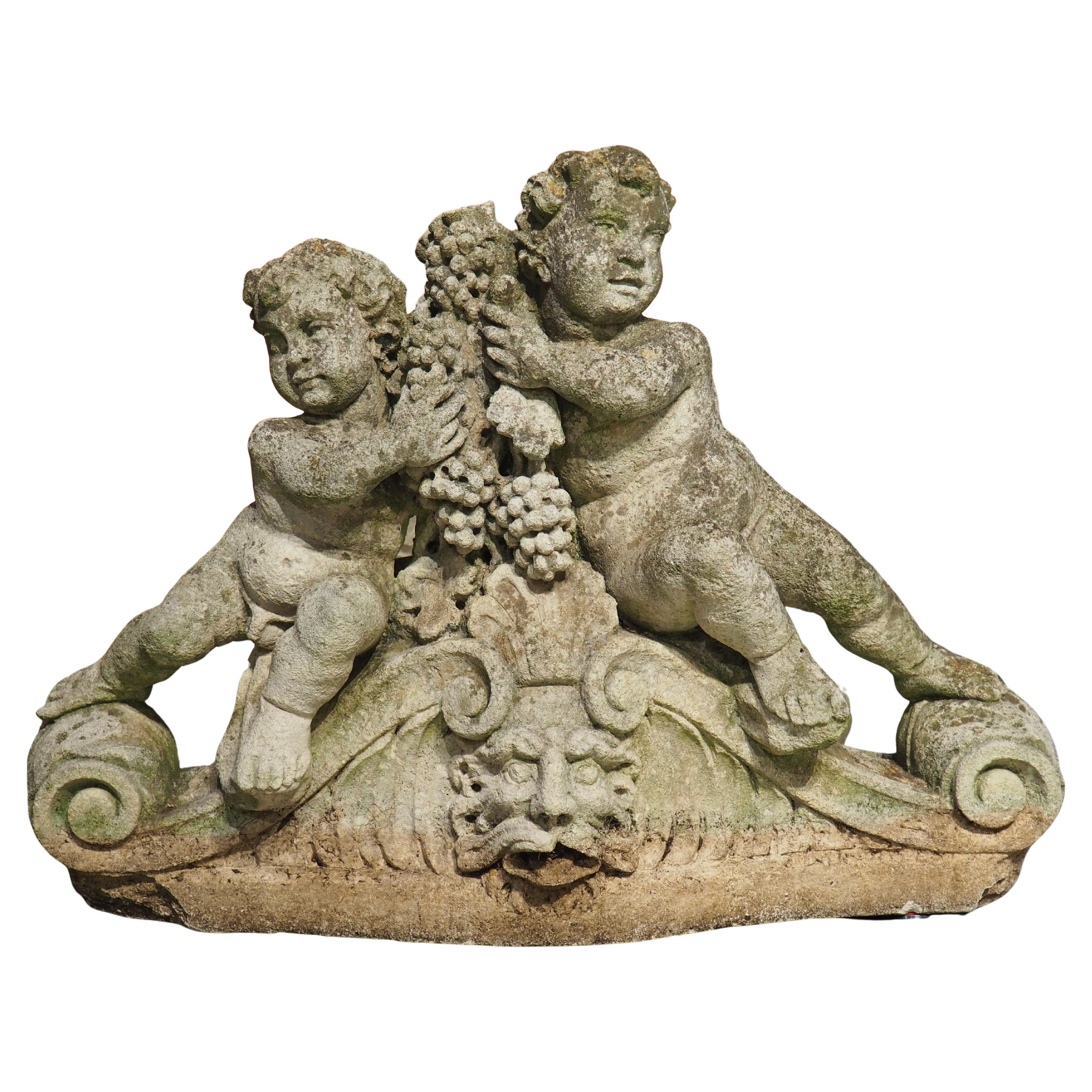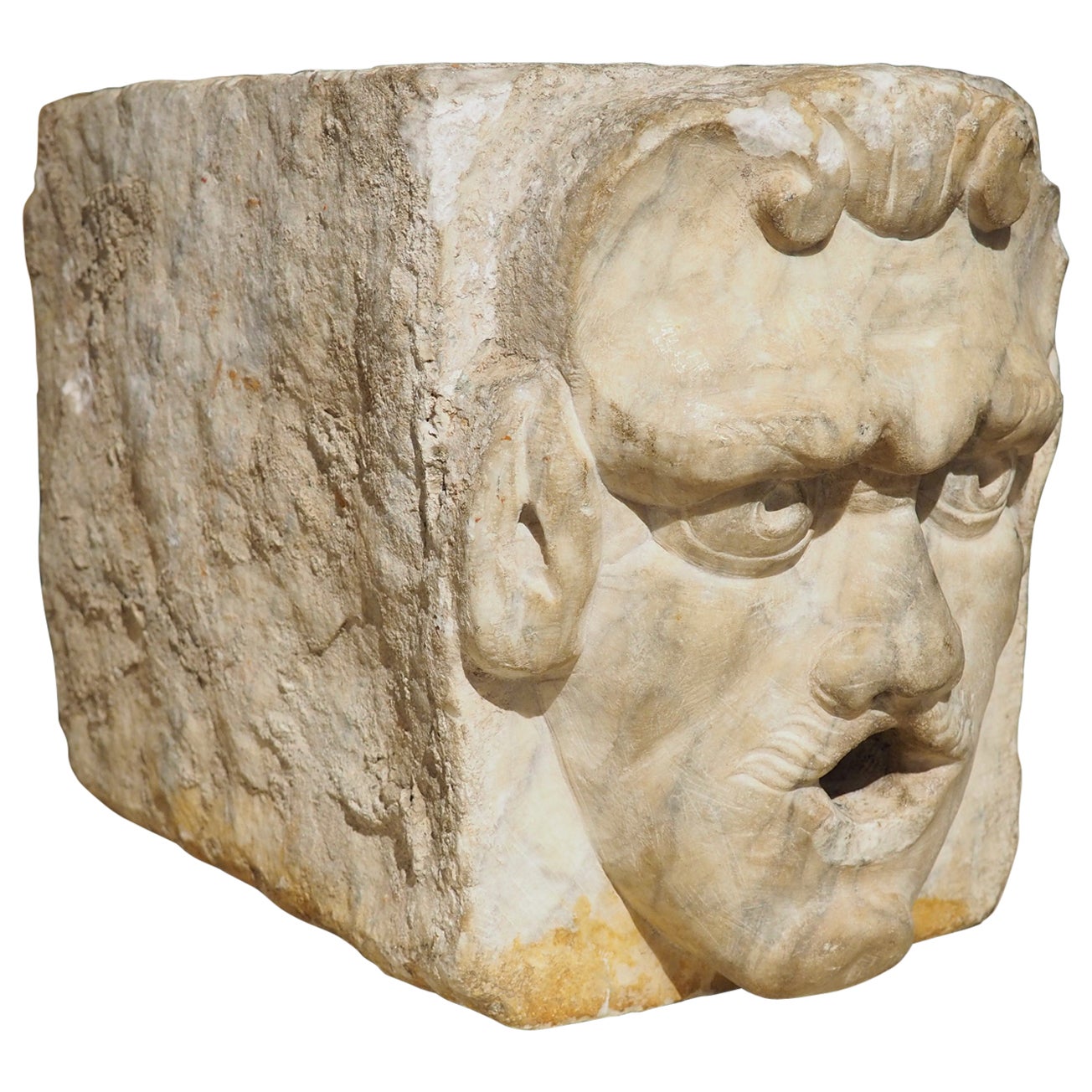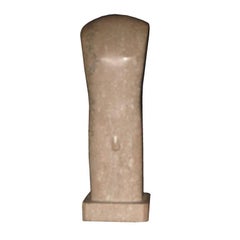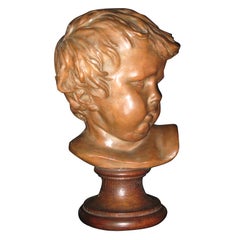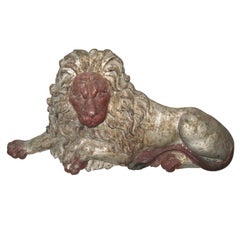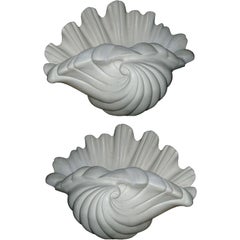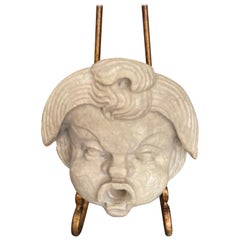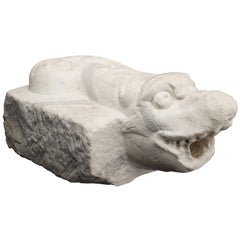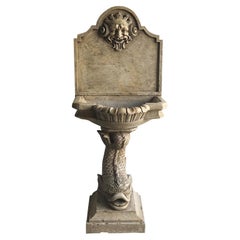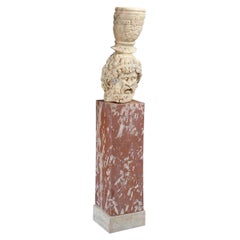Items Similar to Early 19th Century Italian Marble Fountain
Want more images or videos?
Request additional images or videos from the seller
1 of 4
Early 19th Century Italian Marble Fountain
$2,200
£1,661.67
€1,920.41
CA$3,085.84
A$3,432.24
CHF 1,796.36
MX$41,862.04
NOK 22,571.95
SEK 21,231.83
DKK 14,334
About the Item
Early 19th century Italian hand-carved marble fountain in a form of a putto.
- Dimensions:Height: 8 in (20.32 cm)Width: 6.5 in (16.51 cm)Depth: 5.25 in (13.34 cm)
- Place of Origin:
- Period:
- Date of Manufacture:1810
- Condition:Wear consistent with age and use. Very Good.
- Seller Location:Water Mill, NY
- Reference Number:1stDibs: U0808128363262
About the Seller
5.0
Vetted Professional Seller
Every seller passes strict standards for authenticity and reliability
Established in 1972
1stDibs seller since 2007
200 sales on 1stDibs
Typical response time: 5 hours
- ShippingRetrieving quote...Shipping from: Water Mill, NY
- Return Policy
Authenticity Guarantee
In the unlikely event there’s an issue with an item’s authenticity, contact us within 1 year for a full refund. DetailsMoney-Back Guarantee
If your item is not as described, is damaged in transit, or does not arrive, contact us within 7 days for a full refund. Details24-Hour Cancellation
You have a 24-hour grace period in which to reconsider your purchase, with no questions asked.Vetted Professional Sellers
Our world-class sellers must adhere to strict standards for service and quality, maintaining the integrity of our listings.Price-Match Guarantee
If you find that a seller listed the same item for a lower price elsewhere, we’ll match it.Trusted Global Delivery
Our best-in-class carrier network provides specialized shipping options worldwide, including custom delivery.More From This Seller
View AllMid-Century Marble Statue
Located in Water Mill, NY
Modern sculpture of a male Torso-Hampton location.
Category
Vintage 1960s Italian Sculptures
Terracotta Putto on a Oak Base
Located in Water Mill, NY
Terracotta sculpture of Putto on a polished oak base.
Category
Early 20th Century Sculptures
Materials
Terracotta, Oak
Georgian Monumental Iron Lion Door Stop or Fireplace Ornament
Located in Water Mill, NY
Georgian monumental iron lion fireplace ornament or door stop with wonderful old paint with great patina.
Category
Antique 19th Century English Fireplace Tools and Chimney Pots
Materials
Iron
Four-Plaster Shell Wall Sconces
Located in Water Mill, NY
Two pairs of plaster shell wall sconces-not wired, Hampton location.
Category
Vintage 1970s American Wall Lights and Sconces
Materials
Plaster
$2,000 / set
Mid-Century Plaster Lamp
Located in Water Mill, NY
Mid-Century plaster lamp with flowers and scrolls on round base.
Category
Mid-20th Century North American Table Lamps
Materials
Plaster
$1,400
Doré Bronze and Marble Lamp Attributed to Caldwell
By Edward F. Caldwell & Co.
Located in Water Mill, NY
Doré bronze and marble fountain with three Satyrs attributed to Caldwell made into lamp. With silk shade.
Category
Early 20th Century American Table Lamps
Materials
Marble, Bronze
You May Also Like
Antique Italian Marble Fountain Fill
Located in West Palm Beach, FL
Hand carved Italian marble fountain fill in the form of a Putto head. A wonderful architectural treasure. Can be used as originally intended or...
Category
Antique 19th Century Italian Renaissance Fountains
Materials
Marble
Italian Ancient Marble Sculpture Fountain, Late 16th Century
Located in Milano, IT
Sea monster
Carrara marble mouth fountain
Italy, late 16th century
It measures 13.8 x 31.5 x 18.9 in (35 x 80 x 48 cm)
State of conservation: some small evident gaps and widespread signs of wear due to outdoor exposure. The gray marks crossing it do not come from restoration, but are rather the natural veins of the marble.
This work has some morphological characteristics typically associated with the iconography of the sea monster: an elongated muzzle, sharp teeth, protruding eyes, elongated ears, and a coiled serpent's tail.
An in-depth series of studies on artistic depictions of the sea monster attempted to verify how this symbol evolved in antiquity in the European and Mediterranean contexts and how it gradually changed its image and function over time. The iconography itself is mutable and imaginative and its history is rich with cultural and artistic exchange, as well as the overlapping of ideas. This occurred so much that it is difficult to accurately pinpoint the "types" that satisfactorily represent its various developments.
However, we can try to summarize the main figures, starting from the biblical Leviathan and the marine creature that swallowed Jonah (in the Christian version, this figure was to become a whale or a "big fish", the “ketos mega”, translation of the Hebrew “dag gadol”). Other specimens ranged from the dragons mentioned in the Iliad (which were winged and had legs) to "ketos” (also from Greek mythology), the terrifying being from whose Latinized name (“cetus”) derives the word "cetacean". See J. Boardman, “Very Like a Whale” - Classical Sea Monsters, in Monsters and Demons in the Ancient and Medieval Worlds, in Papers presented in Honor of Edith Porada, Mainz am Rhein 1987, pp. 73-84).
In Italy the monster underwent yet further variations: it can be found in Etruscan art on the front of some sarcophagi representing the companion of souls, while among the Romans we find the “Pistrice” (cited by Plinio in Naturalis Historia PLIN., Nat., II 9, 8 and by Virgilio in Eneide: VERG., Aen., III, 427), which appeared in the shape of a stylized hippocampus or a very large monstrous cetacean and evolved into a hideous being with a dragon's head and long webbed fins.
During the Middle Ages, the sea monster was the object of new transformations: at this time, it is often winged, the head is stretched like a crocodile, the front legs are often very sharp fins - sometimes real paws - until the image merges with dragons, the typical figures of medieval visionary spirituality widely found throughout Europe (on this topic and much more, see: Baltrušaitis, J., Il Medioevo fantastico. Antichità ed esotismi nell’arte gotica, Gli Adelphi 1997).
In Italy during the 15th and 16th centuries, the revival of classicism - representative of the humanistic and Renaissance periods - led to a different reading of these "creatures". Indeed, the sea monster was also to find widespread use as an isolated decorative motif, especially in numerous fountains and sculptures where dolphins or sea monsters were used as a characterizing element linked to water (on this theme see: Chet Van Duzer, Sea Monsters on Medieval and Renaissance Maps, London, The British library, 2013).
From the morphological point of view, the "sea monsters" of this period are mostly depicted as hybrid figures, in which the body of a mythological or real being (a hippocampus, a sea snake, a dolphin), is joined to a head with a rather indistinct appearance. It was usually characterized by large upright ears, an elongated snout, sharp teeth and globular, protruding eyes; a complex and indefinite figure, both from the symbolic point of view and from that of its genesis.
The work we are examining is placed as a cross between the medieval sea serpent and the Renaissance dolphin, with stylistic features which recall the snake as often used in heraldry (such as the "snake" depicted in the coat of arms of the Visconti - the lords and then dukes of Milan between 1277 and 1447 - and which, for some, may be derived from the representations of the “Pistrice” that swallowed Jonah).
In the search for sources, Renaissance cartography and in particular woodcuts should not be neglected. See for example the monsters of Olaus Magnus, from the editions of the “Historia de gentibus septentrionalibus” (“History of the peoples of the north”) and the natural histories of Conrad Gesner, Ulisse...
Category
Antique 16th Century Italian Renaissance Animal Sculptures
Materials
Carrara Marble
19th Century Italian Antique Marble Wall Fountain
Located in West Palm Beach, FL
An antique Breccia marble wall fountain. The scalloped water basin is supported by a dolphin sitting on a square base. The backsplash has a very detailed carved mask as the spout. Mi...
Category
Antique 19th Century Italian Fountains
Materials
Marble
Tulio Lombardo Style Marble Fountain
Located in New Orleans, LA
This marble fountain sculpture in the style of Tulio Lombardo embodies the glory of Renaissance sculpture. Reminiscent of classical portrait busts, a bearded man's face serves as the...
Category
Antique 17th Century Italian Renaissance Fountains
Materials
Marble
Antique French Reconstituted Stone Fountain Element, Garden Statuary, Circa 1900
Located in Dallas, TX
Made from reconstituted stone circa 1900 in France, this fountain element or garden statuary depicts two putti sitting on a long scrolled console. Th...
Category
Early 20th Century French Fountains
Materials
Stone, Cast Stone, Cement
15th or 16th Century Marble Gargoyle Fountain Spout from Arezzo, Italy
Located in Dallas, TX
Although when most people hear the word “gargoyle”, they probably envision small, winged creatures with grotesque visages. However, the phrase has a deeper meaning, encompassing any carved head (animal or human) that function as waterspouts.
From the Early Renaissance (late 1400’s/early 1500’s), our gargoyle fountain spout features a human-like face with pointed ears, possibly representing a centaur or a satyr. The roughly rectangular block of marble was hand-carved in Arezzo, in the Tuscany region of Italy. All sides except the front of the cream-colored stone have a sawed finish, resulting in a rough texture. The back has been excavated, adding to the character of the gargoyle. A 1 ½” diameter hole has been cut all the way through, forming an open mouth of the gargoyle. The gaping mouth was often a symbol used to conjure images of devouring giants and used to remind people that they are susceptible to certain forces.
Our 15th/16th century marble...
Category
Antique 16th Century Italian Renaissance Fountains
Materials
Marble
More Ways To Browse
Antique Italian Garden Fountain
Italian Marble Garden Fountain
Midcentury Fountain
Antique Wall Fountain
Fountain Head
Large Antique Fountain
Antique Bronze Fountains
Fountain Basins
Garden Spout
Metal Basin
Limestone Basin
Antique French Basin
Fountain Spout
Large Bronze Fountains
Italian Water Fountain
Antique Water Spouts
Water Fountain Basin
Bird Fountain
